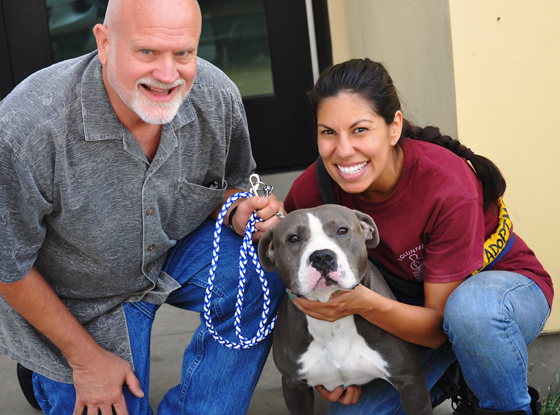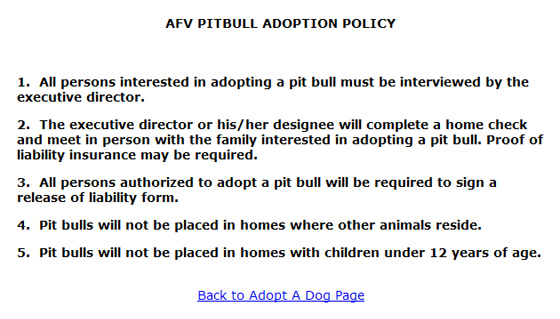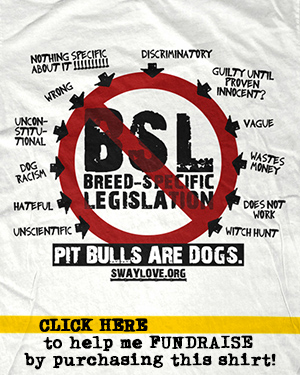So yesterday morning I went to a Los Angeles Board of Animal Services Commissioners’ meeting that was regarding a proposal to due away with late-term abortions happening in city shelters. There is many other facets to this, including created plans on how L.A. City intends to try and make this work. Much of that has been semi-detailed in documents first released by Brenda Barnette (that were available at this meeting, can’t find them online), and also reviewed by other publications that are available online.
Every single person in attendance (30 or so), except for me and 1 other person, were against this proposal and thus for late-term abortions. I personally understood much of what these many folks had to say. I agreed with a lot of the criticism. I most definitely do not trust Brenda Barnette and called her disingenuous to her face in my public comment. I do not agree with L.A. City and what can only be viewed as their hypocritical attempt to create a monopoly on breeding. I do not agree with L.A. City with how this late-term abortion debate is being viewed solely as a way to “generate more revenue.” I find it really disheartening that the ethical principle of it all falls by the wayside when compared to the idea of revenue generation. Some of the details of what Barnette has in mind are shady at best, and trusting her to be genuine and transparent on this issue is not something that I’d personally put much stock in.
…But with all that being said, I cannot wrap my head around the abandonment of principle here. Both as just a general animal-lover and advocate, but also as someone who sees what true No Kill is supposed to be (and can be) vs. what L.A. City and NKLA are doing and have been doing under the guise of No Kill.
Much of my public comment pointed this out. I noted that Phyllis Daugherty reported that under Brenda Barnette’s watch existing spay/neuter subsidy money for low-income residents was “not maximized,” and instead had over $200,000 reallocated in order to pay staff salaries. Another $400,000 was reportedly lost “due to it not being spent.” What in the hell? I asked if this was true… The Commissioners couldn’t directly respond back to me so I have no idea. But if true then that’s utterly disgraceful. The maximizing of spay/neuter funds for low-income residents is one of the foundational elements of any legitimate No Kill effort.
I then noted that what NKLA was doing was not following what is advertised by the No Kill Advocacy Center, but rather putting forth what seems to be a marketing ploy that continues fundamental business as usual. I said that all of these “puppy mill” pet stores that are being shut down should be used to promote shelter dogs, and hopefully many adult dogs and Pit Bull-type dogs will be routinely featured there in the future. I think we all want to see this, alongside whatever puppies also exist, and that a balance is able to be struck. Lord knows there’s a lot of these former stores out there…
So I verbalized my confusion as best as I could, which was probably not the most eloquent. These are tough issues. All I know is that the basic premise of the No Kill idea is that you don’t end a life of an animal that is not truly suffering or truly vicious. That notion aligns with L.A. City’s attempted policy change on late-term abortions. But what are their motives? That’s an entirely different discussion. Because very little of what L.A. City has done (and continues to do) aligns with what the No Kill Advocacy Center actually promotes as ways to truly be successful. L.A. City has almost openly shunned the process entirely. They routinely kill countless dogs, every day, while giving this cleaned up impression that Los Angeles is a No Kill city. That bastardizes what has been shown to be successful elsewhere, and it serves to bastardize the idea of No Kill in general. It is a well-poisoner so to speak. So I’m confused. And all I see is disingenuousness from Brenda Barnette and the few (or many) others that are responsible for the direction that NKLA has taken thus far.
I agree with much of what is written right here. What are your thoughts? Ask yourself: Is killing wrong and do you reject it?
A few people commenting yesterday kept saying that when you abort puppies and kittens that are due to essentially be born in mere days, well, it doesn’t matter because “they haven’t experienced life.” Many of these people seem to then want to make it into a tradeoff scenario as a response to anyone that doesn’t fully agree with them. So now will I be told that I support rampant breeding? Will I now be told that I support the continued shelter killing of countless innocent pets? Well, those are clearly straw man arguments that carry very little legitimacy when viewed in proper context. I support the reforming of the animal sheltering system. I support tireless and thoughtful education and communication, and providing the many services that lead to both expansive adoption results and voluntary spay and neuter. I support the idea that human beings can be better than what many of us think that we are. I support the idea that pets should be a part of the family, and that every little bit helps in getting there, but that you also can’t micro-manage the results that you see out of a fear that something will always go wrong. What does that get you? The shelter already does wrong by many of these animals every day.
I sensed a massive wave of defeatist energy from most everyone who probably thought that I was an idiot for going against the grain on this issue. Hell, many of the commenters essentially implied that the Commissioners were lunatics for even giving this topic a platform at all. (One curious thing that a few people noticed was how this specific issue made it all the way to the Commissioners’ meeting at the request of 1 individual. Wow. Someone’s apparently got some pull! I know that there’s many other issues that countless people would love to see discussed. How do we get those things up for an honest debate? But I digress…) Back to the defeatist energy… I sensed it from most of the public commenters, from numerous Commissioners, and I always seem to sense it from Barnette. It showed in the way that many of the commenters talked about the poorest among us, it wasn’t very flattering commentary. The nanny-state stuff, the anti-this or -that vibe that reeks of over-protectiveness can often times be detrimental to what you are trying to ultimately achieve. We are never going to have a system that is absolutely perfect. What is near-perfect to someone may not be near-perfect to the next person. What I do know is that we can be a hell of a lot better that what we are now. Way better. We can be better.
I was joking around with my girlfriend as we were talking about this meeting, and I threw out to her that I’ve heard that Brenda Barnette makes between $220,000 and $240,000 per year. I then said that they could hire me to run L.A. City Animal Services and that I’d do it for $50,000 a year. That may sound preposterous on its face, and many would point to my “inexperience” and all the rest of it, but how could I possibly do that job any worse than it’s being done right now? And that’s not to say that someone couldn’t do it worse, or that Barnette hasn’t done some good things… But I know for a fact that if you simply slid her out and slid me in, that the machine would continue charging down the tracks at at least the current rate it’s going, and that’s the worst-case scenario… I guess that internal parts could potentially revolt, due to certain people not liking me or my ultimate aspirations of reform. Some might act in ways to attempt to discredit me or my ideas, or leave entirely, but that’s a risk I would take and I’d just have to have a bigger faith in humanity as a whole.
Albeit a joke, I do think that I could actually make a positive difference. I do know that I’d talk openly about the process, and how much or how little that bureaucracy got in the way. I do know that I’d be transparent and that I’d use funds to inform people of what a Los Angeles shelter currently is and what it has been for as long as we could look backwards. I’d dovetail that with a request to change it. I do know that I’d ask for help, and that I’d attempt to surround myself with people that I think are capable, and people that maximize the many shortcomings of my own personality. What I do know is that you’d be saving between $170,000 and $190,000 in salary. What I do know is that I wouldn’t have squandered the over $600,000 that was already allotted to low-income spay/neuter programs. Add the saved salary to what was reportedly flushed down the toilet and there’s all of a sudden another $800,000 sitting there for genuine low-cost spay/neuter representation.
Am I bad or nutty because I think that we can be better? Better as people, as communicators, as leaders, as a community, as a city, as a county, as a state? Is what L.A. City and L.A. County are doing okay with you? They are different public mechanisms but the result is far too often the same. Is it not? Is it not?


















